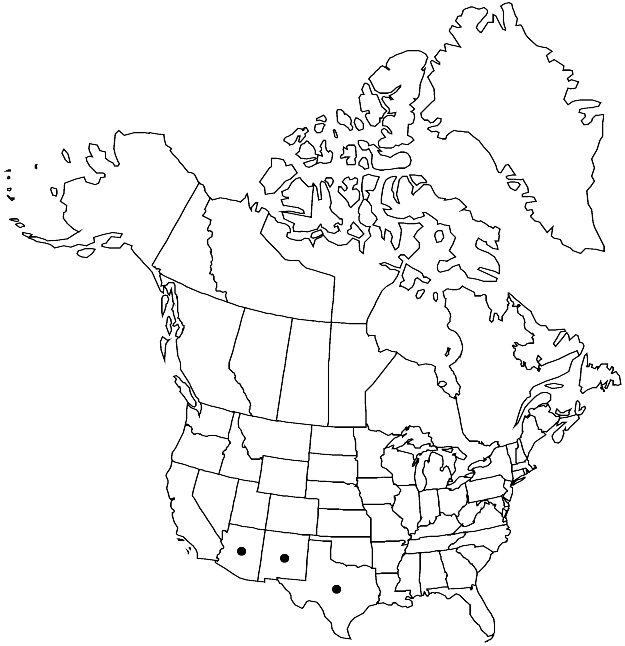Rosulabryum andicola
Biodivers. Poland 3: 162. 2003.
Plants small to large, green to red-green. Stems 0.4–5 cm, distinctly and singly rosulate, often with interrupted tufts, innovations short, rosulate. Leaves of main rosette and innovations similar, latter smaller; irregularly twisted and spirally twisted around stem when dry, erect-spreading when moist, obovate, weakly concave, 0.6–4 mm; base not decurrent; margins recurved on larger leaves to near apex, distinctly and strongly serrate distally, limbidium strong, of 3 or 4 rows of cells; apex broadly acute; costa short-excurrent, awn stout, variously straight to curved when dry; proximal laminal cells long-rectangular in rosette leaves, short-rectangular in smaller proximal leaves; medial and distal cells short-rhomboidal, 16–20 µm wide, 3–5:1, walls thin to firm, porose. Specialized asexual reproduction by gemmae in leaf axils, brownish, densely papillose, and rhizoidal tubers, reddish brown, 300–1000 µm. Sexual condition dioicous. Capsule nutant to inclined, brown, cylindric, 3–6 mm.
Phenology: Capsules mature Jun–Aug.
Habitat: Moist to dry soil, soil over rock, wood in mountainous areas
Elevation: moderate to high elevations (900-2500 m)
Distribution

Ariz., N.Mex., Tex., Mexico, Central America, South America, s Africa.
Discussion
Rosulabryum andicola is a large, striking species when well developed, but at the northern edge of its range in the Southwest it is often much smaller. The strong border and sharply serrate leaves combined with the filiform gemmae serve to distinguish smaller specimens from small species of Rosulabryum; it is most closely related to R. albolimbatum and R. billardieri of the Southern Hemisphere. There is some confusion over the identity of the species, as the type is reported to be similar to R. flaccidum. Specimens named R. andicola in the sense of M. A. Mohamed (1979) are large, robust plants, very unlike the small R. flaccidum. If R. andicola is synonymous with R. flaccidum, then the next oldest name for this species is Bryum ehrenbergianum Müller Hal.
Selected References
None.